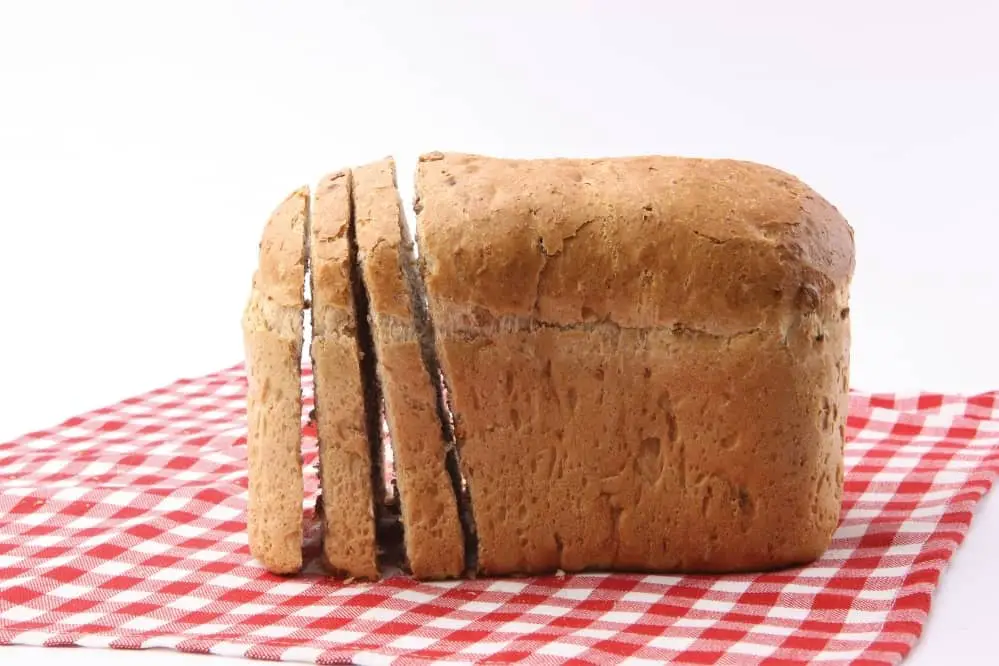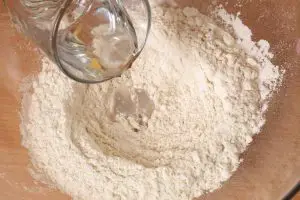In a loaf of store-bought sandwich bread, there are around 24 slices; some might have a little less. One thing to know about these slices is that the count does include the ends, also called the heels. Most people don’t count them as slices because they don’t typically use them. However, they are great for toasting, but they can also be used for sandwiches.
In all honesty, how many slices are in a loaf of bread will depend on the type of bread. The reason why is that not all loaves of bread are equal when it comes to baking. Not only do the number of slices in a loaf vary by the type of bread, but it can also vary by country. If you really want to know how many slices of bread are in your loaf, your best bet is to actually count them when you get home from the store.
How Big Is a Typical Slice of Bread?
A normal piece of store-bought sandwich bread weighs around one ounce. Most slices of bread are about half an inch thick and come in a square shape. These slices of bread are typically four and a half inches by four and a half inches.
This size applies to most store-bought loaves of bread, but the thickness can vary based on the type of bread being purchased. The best part is that you can slice your homemade loaves to roughly the same size and shape as a store-bought one. The bigger the loaf, the more slices you can cut.
Number of Slices and Bread Types
Because different varieties of bread have different ingredients, you will get different numbers of slices from them. Whole-grain bread, for example, can’t be sliced into smaller slices because of the fiber it contains.
Sourdough: The average sourdough loaf weighs 36g. This size loaf yields around 24 slices of bread. Bread should be sliced into half-thick slices for best results. It’s simpler to deal with bigger slices because the thinner ones tend to crumble. When baked, sourdough is filled with lots of empty holes because of the carbon dioxide produced when letting the yeast ferment.
Wholemeal: A loaf of wholemeal bread weighs 400 grams on average and contains between eight to ten slices of bread. The entire loaf of bread is made with whole-wheat milled grains. This type of bread can crumble and fall apart if sliced too thin, so the pieces are cut thick on purpose. Many of these loaves also feature a seed crust.
Rye: A typical loaf of rye bread contains around 24 slices. The reason why rye bread can contain so many slices in a single loaf is because of how dense the bread is, especially when compared to other wheat-based loaves of bread. The higher density allows for thinner slicing. Rye is a popular choice for those with wheat allergies. It also has a high fiber content.
How Many Slices Are in a Loaf of Bread Made by a Bread Machine?

The answer to this question will vary based on what size loaf you are making. Most bread machines allow users to select from three differently sized loaves. To answer this question, though, we will go with a two-pound loaf as that is the size most commonly made by people at home. With this size loaf, you can generally expect there to be 12 large slices. It can be less if you slice the pieces thicker.
Five Tips for Slicing Bread
Now that you have made a fresh loaf of bread, it’s time to start slicing it. Here are our best slicing tips for that freshly baked loaf.
Allow the Bread to Cool Down: If the bread is hot out of the oven, it’s too soft to slice. Allow your bread to cool completely before attempting to mash it. This will also help the crust to set up and become the right consistency. While warm bread is delicious and tempting to eat, you’ll need a sharp knife to cut it up and serve it. Slice the bread in a sawing motion rather than in a downward movement by applying little pressure.
Always Use a Slicing Guide: When slicing bread, use a guide to ensure that each slice is uniform in shape. Because they are available in a wide range of features and sizes, choose the one with an adjustable slice size. If you deal with different varieties of bread, such as rye and wholemeal, you may need thinner or thicker slices; thus, this will come in handy. It will also serve as a safety mechanism against the knife’s sharp edge, protecting your fingers as a result.
Read our detailed review of Best Bread Slicer And Slicing Guide.
Pick the Right Knife: On any bread, but especially hard-crusted loaves, a serrated blade is the only blade to use. To avoid knife sliding, you’ll need your teeth to hold the crust. A blade that is eight inches long enables smooth cutting and adequate control; longer blades can become cumbersome. Short, jagged sawing actions are preferable to long, smooth ones.
Read our comprehensive review of Best Bread Knives.
Use a Stable Surface: Cutting boards that slide around can be dangerous, so be sure that they’re firmly secured. This applies to any slicing, but it is especially true for loaves of bread. Wet a paper towel or thin tea towel and place it between your counter and your cutting board to produce a non-skid surface that will keep your board from sliding. Most people prefer to use a large wooden cutting board that is just a bit longer than the loaf itself.
Let the Knife Do the Work: When slicing bread, it should be the knife doing all of the work and not your arm. The less pressure you exert, the better the slices will be. With the right knife, some people even recommend using an electric knife.
You simply need to apply a small amount of pressure as the knife slides back and forth across the bread. You want to use long slicing motions and allow the knife to fall through the bread. If you press down too hard with the knife, you will smash the bread and cause it to crumble.






